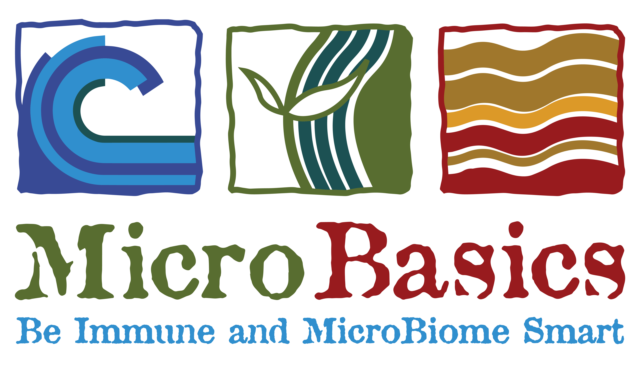Although somatic cell counts (SCC) have long been used as an indicator of udder health and milk quality, several common myths and misunderstandings remain. Dr. David Kelton, veterinary epidemiologist and professor at the University of Guelph, dispelled some of those myths at the American Association of Bovine Practitioners 50th Annual Conference, Sept. 14-16, 2017.
Myth No. 1: Cow SCCs can get too low
It is clear the cow’s ability to respond to an intramammary challenge is complex and varies with the pathogen. Some dairy producers choose to believe very low SCCs are detrimental to their cows and hinder their ability to respond to intramammary infections. The question “Can SCCs get too low?” has been posed and answered many times over the last quarter-century.
Based on a recent review by Larry Fox at Washington State University, it is not the number of cells present in the mammary gland prior to pathogen entry that are important but rather the number of cells that can be recruited quickly to the gland to meet the challenge.
He presents evidence that cows with quarter cell counts as low as 20,000 cells per milliliter are not compromised in their ability to respond to intramammary challenges. Given this knowledge that elevated SCC is associated with lower milk yield and inferior milk product quality, the goal to continue efforts to decrease cow and herd SCC is sound.
Myth No. 2: Daily SCCs and electrical conductivity have too many false positives to be useful
Tracking daily SCC reports can be useful to decide when it is appropriate to intervene with treatment and when to allow the cow’s immune system to handle the pathogen insult on its own. When cows are flagged in a report for SCC or electrical conductivity, the milking system is merely indicating there is a change in milk composition.
Researchers know there is more daily volatility in cow composite SCC than many have traditionally considered. In many cases, very short spikes in SCC are simply indications the cow’s immune system is responding to a mastitis challenge normally.
While worth noting, it’s not necessary to overreact. As long as the cow’s SCC comes back down to normal, these occurrences can be dismissed. With this in mind, the farmer can then ask whether the flag is associated with a normal immune response, or if it is a sustained increase in SCC that requires action.
Myth No. 3: Linear scores and somatic cell scores are intuitive and frequently used
Over the years, Kelton has found some veterinary and animal science students and dairy producers don’t always understand what linear scores or somatic cell scores are. Due to the lack of knowledge on how to interpret them, the scores are often not used or taken into consideration.
However, he says, it is important to understand these scores and the milk loss associated with a high SCC. It is also important to recognize the smaller increments at lower SCC levels are where most of the measurable milk loss happens.
Kelton emphasized milk loss due to elevated SCC is greater than it was 30 years ago and has a greater impact on first-lactation cows than previously understood. He also stressed milk loss due to elevated SCC is greater with more high tests and greater in higher-producing cows.
Myth No. 4: Fluctuation in bulk tank SCC is seasonal and beyond our control
Elevated bulk tank SCCs occur every summer and early fall on most farms. Some producers argue this is just “reality” and out of their control. In disagreement, Kelton’s graduate student, Dr. Dan Shock, examined the average bulk tank SCC from every herd in Ontario, Canada. He found SCCs in about 60 to 70 percent of the herds peaked in the summer. However, not all herds did.
Some peaked in either the spring or late fall – and sometimes even in the winter. He suggested other factors were at play and a high bulk tank SCC isn’t just driven by one season or issue.
Using qualitative research by leading focus groups, Shock attempted to determine the difference in producers’ attitudes toward SCC. Both the high- and low-SCC groups said they felt it was important to get their bulk tank SCC as low as possible. However, Shock found the difference between the two groups was in what level each believed lowering SCC was under their control.
The producers who said they felt in control were the ones who had managed to decrease their cell counts and had a high degree of control over udder health. Producers with high average bulk tank SCCs were throwing up their hands and saying, “This is the best we are going to do. So I’m going to go and concentrate on other things instead.”
Myth No. 5: A premium for low-SCC milk is the best way to reduce SCC
While financial incentives to lower SCC milk are effective in stimulating some dairy producers to take action, others are motivated to apply their limited resources to other areas on the farm.
According to Kelton, the three motivators for adoption are: penalties and regulations, incentives or economic reward and ease of job.
Among the dairy focus groups in Ontario – where no SCC premiums are in place – Kelton’s graduate student, Emilie Belage, found participants felt if the marketplace demanded higher milk quality or lower SCC via a penalty, producers would have to comply with the consumer demand and “adapt or get out.”
Some producers said penalties would motivate them to try not to incur additional costs. In regards to economic reward, participants also said they would increase efforts to lower SCC if financial incentives were available.
Similar group discussions were repeated in Quebec, where there is a premium program for low SCC. Producers there agreed penalties were an effective means to reduce SCC, but existing financial incentives weren’t large enough to change their focus from other tasks on their farms. ![]()

-
Audrey Schmitz
- Editor
- Progressive Dairyman
- Email Audrey Schmitz





